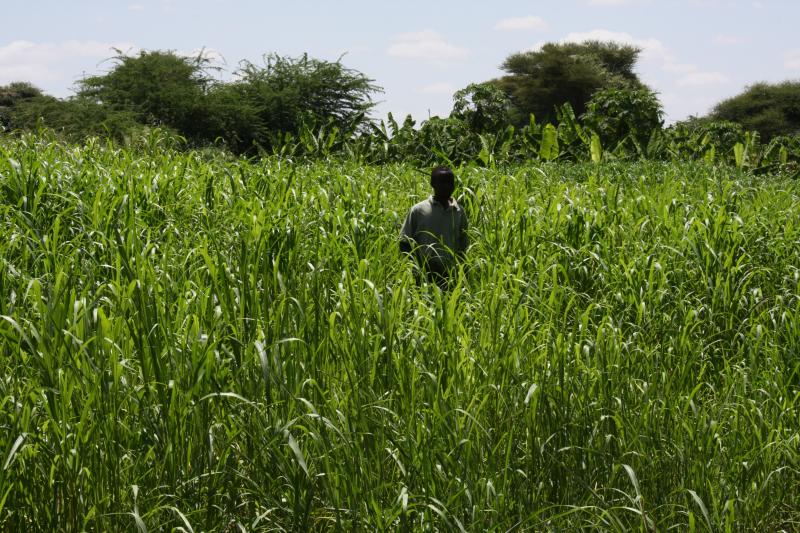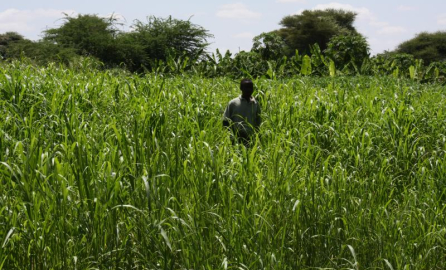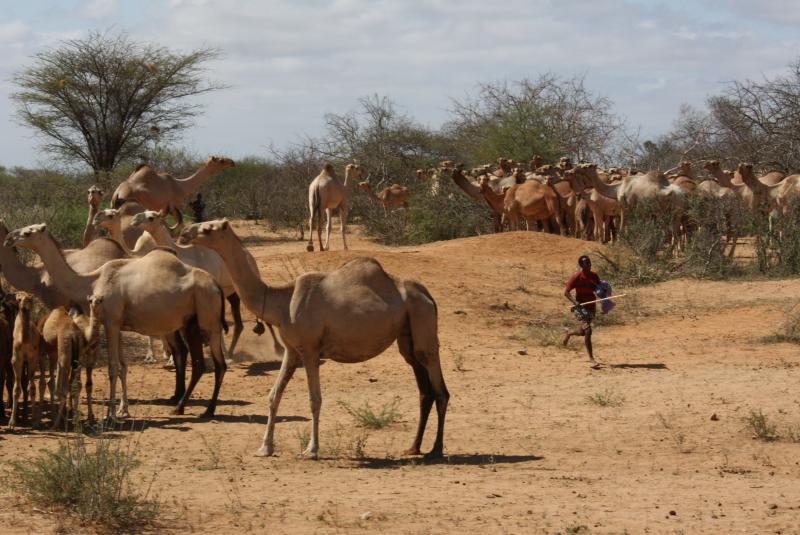The EU’s Food Facility is supporting an innovative approach in Eastern Africa to strengthen food security in arid and semi-arid lands. Last year, EuropeAid’s Daniel Clauss accompanied a review mission to the region to visit EU funded projects and assess the effectiveness of the M&E framework in that context.
Large parts of northern and eastern Kenya consist of arid and semi arid lands, where the scarce periodic rainfall is crucial for the livelihood of around six million people. The EU’s Food Facility tries to help people in the region to prepare for future droughts and make them less vulnerable by tackling the issue of food security. The Food Facility was set up in the wake of the world food crisis in 2008 and provided for one billion euros funding worldwide in three years to reduce the vulnerability of countries and communities to changes in food prices and local disasters.
A range of projects have been financed in Kenya. One of them is a basket of innovative projects in different regions implemented through the UN Food and Agriculture Organisation (FAO). EuropeAid decided to conduct a performance assessment using its Results Oriented Monitoring (ROM) tool.
Last year, Daniel Clauss, who works with ROM and project methodologies in general in the Quality and Impact Directorate at Headquarters, accompanied an external expert to Kenya to assess the performance of the project and to provide recommendations on how to improve it. Mr Clauss’ role was to observe how the monitoring and review system was operating.
“Every year we produce nearly 2000 ROM reports," said Mr Clauss recently when interviewed in his office in Brussels.
Garissa is the district capital of North Eastern Kenya, one of the hottest places in the country and the last big town before the Somali border. Stricken by recurrent drought in recent years, the Tana River provides a thin green strip within a dusty landscape. Many of the people living there are pastoralists, moving with their herds of cattle, camels and goats in search of water and pasture, and some have partially settled into farming. “The key problem during droughts is that the pastoralists rely on wild growing fodder for their animals. If there is no rain, there is no pasture and the animals starve,” said Mr Clauss. In recent years there has been significant loss of livestock, accompanied by a significant depression of livestock prices resulting in widespread poverty.
One of the interventions financed through the EU-FAO project was to incite agro-pastoralists to produce grass fodder to be stored. When other fodder is not available during the dry season, it can be used to feed the animals or sold to other pastoralists to generate income, and contribute to food security in general.
“What might sound obvious was quite a change for the participants. Fodder was seen as something that grew naturally, a given resource. The idea to actively plant grass for fodder was baffling, but that had turned to excitement when the grass grew,” said Mr Clauss.
 The fodder production project was assessed by ROM, which is a quick and light review tool for projects managed by or funded through EuropeAid. ROM uses classic evaluation criteria – relevance, efficiency, effectiveness, impact and sustainability – to guide independent, external consultants to assess the quality of a project, giving fast feedback to both the Country Administration and Task Managers in Delegations as well as Headquarters on how the project is going. It also generates recommendations on how to improve the project itself or other interventions in the same sector or in the same region.
The fodder production project was assessed by ROM, which is a quick and light review tool for projects managed by or funded through EuropeAid. ROM uses classic evaluation criteria – relevance, efficiency, effectiveness, impact and sustainability – to guide independent, external consultants to assess the quality of a project, giving fast feedback to both the Country Administration and Task Managers in Delegations as well as Headquarters on how the project is going. It also generates recommendations on how to improve the project itself or other interventions in the same sector or in the same region.
Mr Clauss' advice to colleagues running a project is to make the quality issue paramount and use M&E as the tool to make sure, from the beginning, that the project has real impact and also to use it to adjust the project to changing circumstances.
“Think about how to get information that is crucial to know whether a project progresses or not, make sure that you have something in place to get this information, and make sure that at regular intervals you sit down and think about what all this means – if there is progress in a certain direction but perhaps in another area you have problems, why is that? Is the design not relevant to the context anymore? Or is there something internal to the project that needs to change?
“And then if you come up with a conclusion of your analysis then take the right steps to actually do something."
Further reading:
Please read this related capacity4dev article, with a video explaining ROM:
http://capacity4dev.ec.europa.eu/article/european-commission-systems-ro…



Log in with your EU Login account to post or comment on the platform.